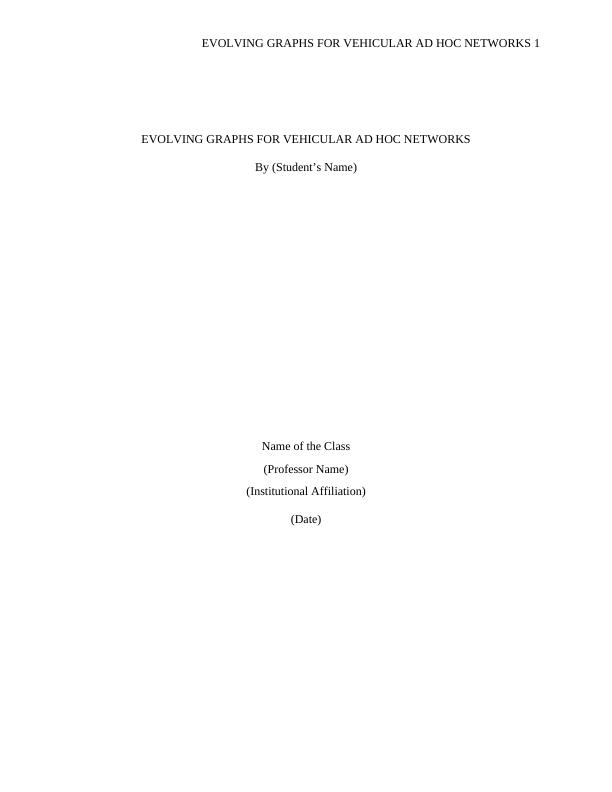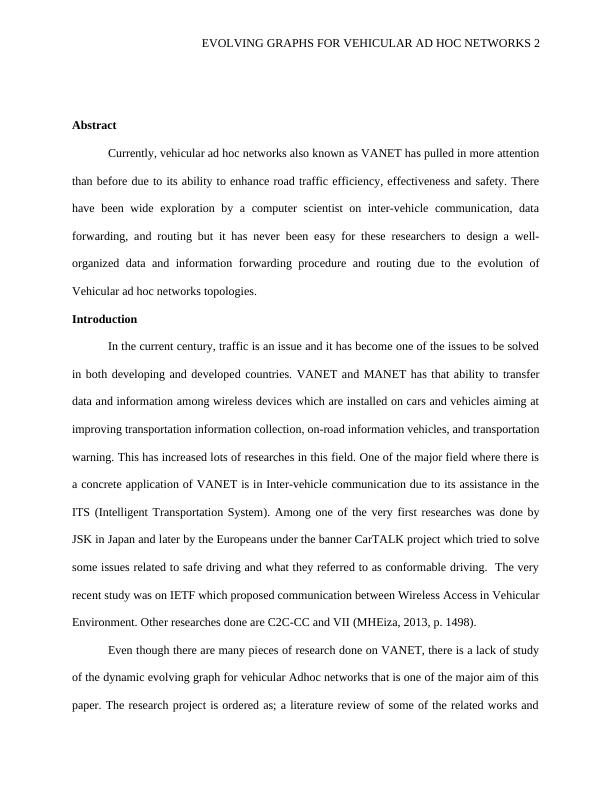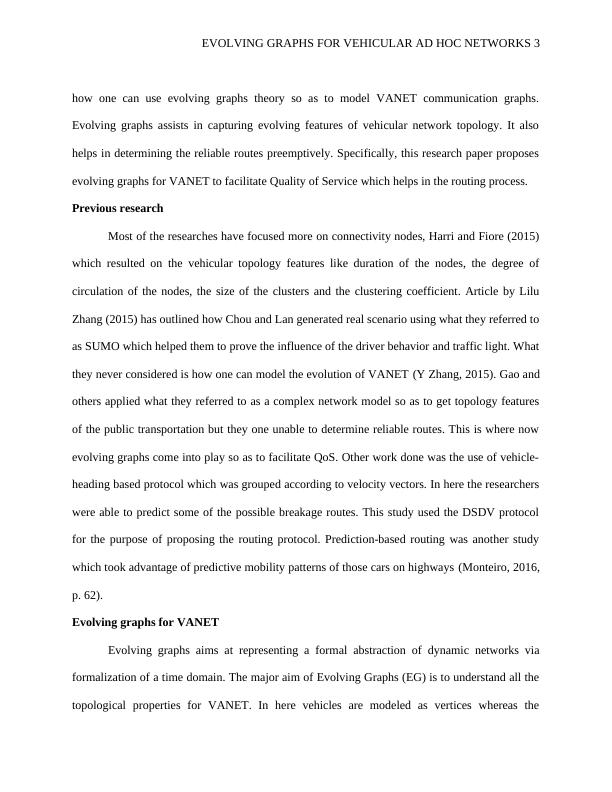Evolving Graphs for Vehicular Ad Hoc Networks
An eCommerce System and website for an Online Grocery Store
8 Pages1459 Words444 Views
Added on 2023-04-26
About This Document
This paper explores the concept of Evolving Graphs for Vehicular Ad Hoc Networks (VANET) and its application in routing schemes. It discusses the advantages of EG for VANET, its performance metrics, and the pseudo-code for its implementation. The paper also reviews previous researches on VANET and highlights the lack of study on the dynamic evolving graph for VANET. The proposed EG model provides a more reliable-based routing scheme for VANET.
Evolving Graphs for Vehicular Ad Hoc Networks
An eCommerce System and website for an Online Grocery Store
Added on 2023-04-26
ShareRelated Documents
End of preview
Want to access all the pages? Upload your documents or become a member.
Vehicular Communication Systems: Advantages and Challenges
|12
|3427
|405
Current Challenges, and Future Perspective in Vehicular Ad-Hoc Networks
|19
|4643
|441
The Vehicular Ad-hoc Network.
|3
|424
|174
Vehicular Ad-Hoc Network: Current Challenges, and Future Perspective
|23
|4698
|107
Vehicular Ad-Hoc Network: Current Challenges
|15
|4140
|174
Analysis of VANETs Architecture and Research Methodologies
|4
|717
|193



